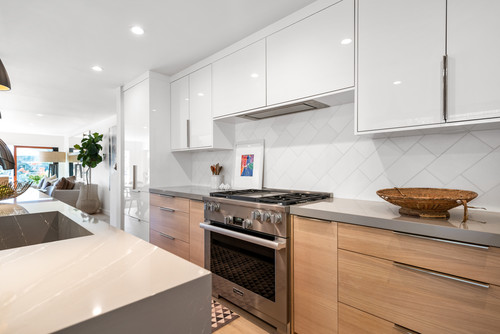Eco-Friendly Materials In Cabinet Design For Homes
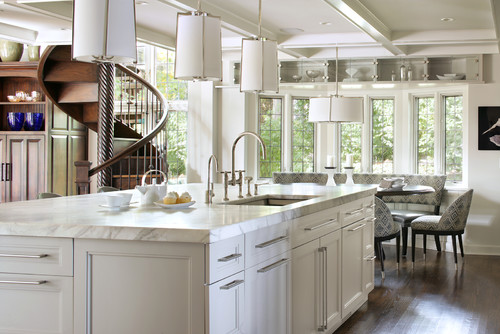
Eco-Friendly Materials in Cabinet Design are the new standard for modern, sustainable living in Canada, blending style with environmental ethics. These materials offer the durability and elegance that Canadian homeowners demand. At rtadepot.ca, we provide sophisticated and practical solutions to elevate your living space. We help you choose green cabinet design options that support a healthier lifestyle, ensuring your decision to invest in Eco-Friendly Materials in Cabinet Design is a rewarding one.
Explore our sustainable cabinet materials to create a kitchen that is both beautiful and beneficial. Choosing the right Eco-Friendly Materials in Cabinet Design can transform your home.
For many homeowners in Canada, the kitchen feels disconnected from their contemporary lifestyle. Outdated cabinets and inefficient storage can cause daily frustration. Finding high-quality, customized solutions that fit unique spaces without the high cost of bespoke cabinetry is a major challenge. Homeowners need a trusted Canadian partner to navigate the choices, ensuring a durable and beautiful result. This is where expertise in Eco-Friendly Materials in Cabinet Design becomes essential.
At rtadepot.ca, we understand these challenges. We specialize in turning chaotic spaces into organized, aesthetically pleasing environments that reflect your style. Our focus is providing premium cabinet solutions that offer a custom feel at a great value. We guide you in selecting the perfect Eco-Friendly Materials in Cabinet Design, making your new kitchen a sanctuary of efficiency and modern elegance.
1. Why Choose Eco-Friendly Materials for Cabinet Design?
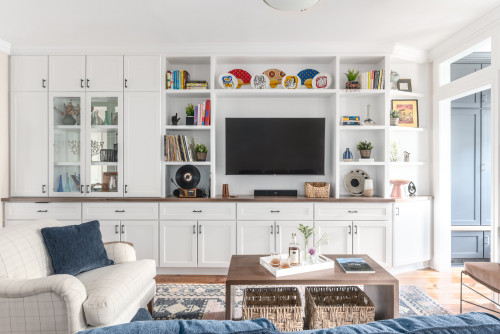
Eco-friendly cabinets enhance your home by improving indoor air quality, supporting environmental sustainability, and potentially increasing property value. They offer a comprehensive blend of health, ethical, and long-term financial benefits for any homeowner.
Choosing Eco-Friendly Materials in Cabinet Design is a decision with benefits extending beyond aesthetics. It is a choice that positively impacts your home, the planet, and your property’s value in Canada. These materials represent a blend of innovation and nature, providing a foundation for a healthier and more responsible lifestyle. By selecting sustainable options, you invest in quality and peace of mind. This commitment to Eco-Friendly Materials in Cabinet Design is a smart one.
1.1. How Do Sustainable Cabinets Improve Home Air Quality?
As of 2025, a key benefit is the significant reduction in indoor air pollutants. Sustainable cabinets improve air quality by using materials and finishes with zero or low volatile organic compounds (VOCs), eliminating the harmful off-gassing common with traditional materials like MDF and particleboard.
Traditional materials can release VOCs, including formaldehyde, into your home. In contrast, the philosophy behind Eco-Friendly Materials in Cabinet Design prioritizes non-toxic composition. Options like formaldehyde-free composites and FSC-certified solid wood use low-VOC or zero-VOC finishes. This focus within Eco-Friendly Materials in Cabinet Design significantly improves air quality, creating a safer space for your family in your Canadian home.
1.2. A Commitment to Global Environmental Responsibility
Your choice in cabinetry has a global impact. Sustainable cabinet materials are sourced and manufactured responsibly. This includes using renewable resources like bamboo or reclaimed wood, which reduces landfill waste. By selecting green building materials and focusing on Eco-Friendly Materials in Cabinet Design, you help conserve forests and reduce carbon emissions. This is a core principle of using Eco-Friendly Materials in Cabinet Design.
1.3. Enhancing Your Property’s Appeal and Value in Canada
In the Canadian real estate market, sustainability is a key selling point. A home featuring environmentally friendly kitchen cabinets is more attractive to eco-conscious buyers. This upgrade signals quality and foresight. Investing in Eco-Friendly Materials in Cabinet Design is a strategic enhancement that increases your home’s marketability and long-term value, making it a wise investment in Canada. The market’s appreciation for Eco-Friendly Materials in Cabinet Design is growing.
Ready to see how sustainable choices can elevate your home? The rtadepot.ca team is here to guide you. Call us for a complimentary design consultation at +1 888 973 5636.
2. What Are The Most Popular Eco-Friendly Cabinet Materials? A Deeper Look
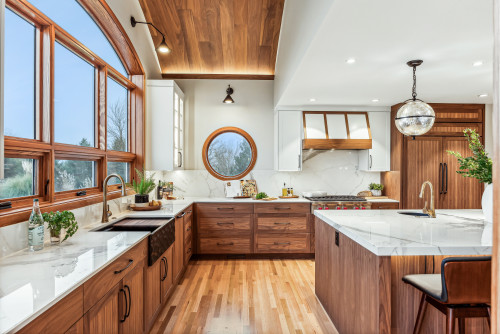
The world of Eco-Friendly Materials in Cabinet Design is filled with innovative options. Homeowners in Canada now have access to sustainable materials offering unique aesthetics and impressive durability. Understanding these choices is the first step toward a kitchen that is both stylish and sustainable. Each material brings its own story, and rtadepot.ca can guide you through the best Eco-Friendly Materials in Cabinet Design for your project.
2.1. Bamboo: The Champion of Rapid Renewability
Bamboo is a fast-growing grass, making it an exceptionally renewable resource. It matures in just 3-5 years, far quicker than hardwoods. Bamboo cabinets are known for their modern aesthetic and are surprisingly strong, often harder than oak. Their distinctive grain adds natural elegance, making them a leading choice in Eco-Friendly Materials in Cabinet Design.
Aesthetically, bamboo offers variety. It can be manufactured to show a vertical or horizontal grain, each providing a different visual texture. Carbonizing the bamboo creates a warmer, amber tone, while leaving it natural results in a light, blonde colour perfect for airy, bright Canadian kitchens. Strand-woven bamboo is the most durable form, created by compressing fibers with a resin, resulting in a surface that resists dents exceptionally well.
2.2. Reclaimed Wood: Character and History in Every Piece
Reclaimed wood is salvaged from old structures, giving beautiful timber a new life. This practice, central to Eco-Friendly Materials in Cabinet Design, prevents waste and brings unmatched character into your home. Each imperfection tells a story. Reclaimed wood is also incredibly stable, having been exposed to the elements for years, making it a durable choice.
Sourcing for this green cabinetry option is an art. Wood can come from old barns, warehouses, or even retired ships, primarily from locations across North America. The species vary, from Douglas fir to heart pine, each with a unique history. The weathered patina and nail holes are often preserved to enhance its rustic appeal, making it ideal for farmhouse, industrial, or eclectic designs popular in many Canadian homes, from rural estates to urban lofts.
2.3. FSC-Certified Wood: The Gold Standard in Responsible Forestry
For those who love traditional wood, Forest Stewardship Council (FSC) certification provides assurance of sustainability. It guarantees the wood comes from a responsibly managed forest. The FSC standard is a critical component of trusted Eco-Friendly Materials in Cabinet Design. It ensures that ecosystems are protected, making it a responsible choice for any Canadian home.
This certification covers a wide range of wood species, including maple, oak, cherry, and walnut, sourced from forests in Canada and abroad. This means you do not have to sacrifice your preference for a particular look to be sustainable. FSC-certified wood provides the classic, timeless beauty many desire, backed by the confidence that its harvesting did not harm forest ecosystems or the communities that depend on them.
2.4. Recycled Steel and Aluminum: A Modern and Durable Choice
For a sleek, contemporary look, recycled metals are a compelling option. These materials are durable, resistant to heat and moisture, and easy to clean. Using recycled metal consumes less energy than producing new metal, reducing the carbon footprint. This makes it a fantastic solution among the available Eco-Friendly Materials in Cabinet Design.
Often used in professional kitchens, stainless steel provides a hygienic and robust surface. For residential use, it can be applied as cabinet fronts or integrated as countertops. The look is undeniably modern and works well in minimalist or industrial designs. To soften the appearance, designers often pair recycled metal cabinets with warmer materials like a wood floor or a colourful backsplash.
2.5. Innovative Composite Materials
The field of sustainable materials is constantly evolving. Composite boards made from recycled paper and wood fibers are bound with non-toxic resins. These materials are dense, durable, and offer a unique, modern appearance. They represent the cutting edge of Eco-Friendly Materials in Cabinet Design by repurposing waste streams into beautiful, functional cabinetry.
Brands like Richlite (made from paper) and PaperStone offer solid-surface options that are incredibly resilient and develop a beautiful patina over time. These materials are an excellent alternative to traditional laminate or stone, providing a unique texture and depth of colour that adds a sophisticated touch to modern kitchen and bathroom designs across Canada.
3. How do Eco-Friendly Materials Compare in Durability to Traditional Options?

A primary concern for homeowners is whether Eco-Friendly Materials in Cabinet Design are as durable as conventional options. The great news is that sustainability does not mean compromising on strength. Many green cabinetry options meet or exceed the durability of traditional counterparts, ensuring your new kitchen is built to last. A proper evaluation of Eco-Friendly Materials in Cabinet Design always includes durability.
A detailed comparison shows that materials like strand-woven bamboo are exceptionally resistant to dents and scratches. Similarly, reclaimed wood is less prone to warping than new lumber. These sustainable millwork materials are not just eco-conscious; they are performance powerhouses. This durability is a key selling point for Eco-Friendly Materials in Cabinet Design.
3.1. Beyond Hardness: Heat and Stain Resistance
While hardness is important, a kitchen environment presents other challenges. Materials like recycled steel are virtually impervious to heat, allowing you to place hot pans on them without worry. Bamboo and specially treated composite materials also offer good heat resistance. For stain resistance, non-porous surfaces like metal and sealed composites are top performers. Reclaimed and FSC-certified woods require proper sealing to resist stains effectively, which is standard for any quality wood cabinetry.
4. What Is The Cost of Eco-Friendly Cabinets? (2025 Data)
Navigating the cost of a kitchen remodel in Canada is a crucial step. A common question is whether choosing Eco-Friendly Materials in Cabinet Design will impact the budget. While some options may have a higher initial price, it is essential to consider the long-term value and health benefits. The price landscape for Eco-Friendly Materials in Cabinet Design is more accessible than many assume.
When considering Eco-Friendly Materials in Cabinet Design, long-term value is key. The superior durability means fewer repairs, and the health benefits are priceless. When you factor in the increased property value for Canadian homes with green features, the return on your investment in Eco-Friendly Materials in Cabinet Design becomes clear.
5. How to Identify Sustainable and Non-Toxic Cabinet Finishes
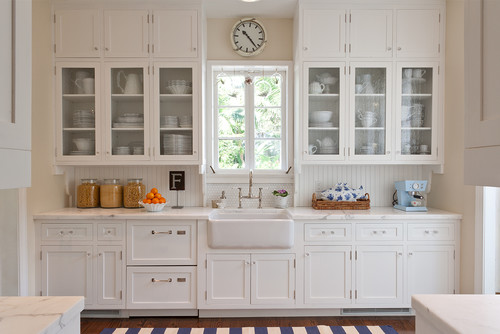
The sustainability of your cabinetry also depends on the finishes and adhesives used. These components are crucial for durability and health. Learning to identify non-toxic finishes empowers you to make a truly healthy choice for your home. This is a vital part of selecting your Eco-Friendly Materials in Cabinet Design.
The main concern with conventional finishes is the presence of VOCs. These chemicals are released into the air and can cause health issues. Truly Eco-Friendly Materials in Cabinet Design will always be paired with finishes that minimize or eliminate these emissions, ensuring the air in your home remains clean and safe.
5.1. Decoding the Labels: Low-VOC and Zero-VOC Explained
When selecting cabinets, look for products labeled as having low-VOC or zero-VOC finishes. Water-based stains and paints are excellent examples. They release far fewer harmful chemicals as they dry. A zero-VOC label indicates the healthiest choice for indoor air quality. Reputable Canadian suppliers of Eco-Friendly Materials in Cabinet Design will provide this documentation.
5.2. The Critical Importance of Formaldehyde-Free Adhesives
Adhesives used in cabinet construction are another potential source of pollution. Formaldehyde, a known carcinogen, is common in traditional glues. To ensure your cabinets are truly eco-friendly, verify they are made with formaldehyde-free adhesives. Look for certifications like GREENGUARD, which tests for chemical emissions and ensures products meet strict air quality standards.
5.3. Exploring Natural Finishes and Oils
Beyond manufactured low-VOC paints, there are natural finishes that offer a beautiful and healthy alternative. Options like tung oil, linseed oil, and even beeswax can be used to seal and protect wood cabinets. These finishes penetrate the wood to create a durable, water-resistant barrier that is easy to repair. They enhance the natural grain of the wood and are completely free of harmful solvents, making them an excellent choice for the chemically sensitive.
6. Installation and Assembly Guide for Your New Cabinets
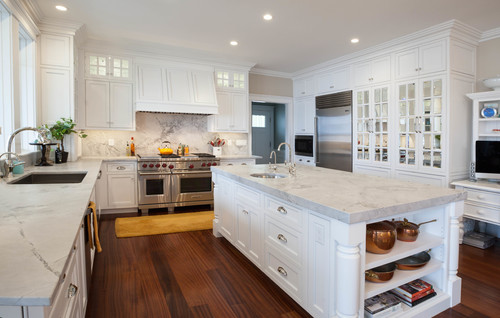
The installation of your cabinets is a major milestone. At rtadepot.ca, our Eco-Friendly Materials in Cabinet Design are engineered for straightforward assembly. However, professional installation ensures a flawless result.
Our ready-to-assemble (RTA) cabinets are designed with precision for easy assembly. For those who prefer a hands-off approach, our network of trusted installers across Canada can manage the entire process. Professional installation guarantees your new cabinetry is perfectly level, secure, and ready to enjoy for years. It is the best way to protect your investment in Eco-Friendly Materials in Cabinet Design.
6.1. Essential Tools for a DIY Installation
For the confident homeowner in Canada tackling a DIY installation, having the right tools is essential. A basic toolkit should include a power drill with various bits, a level, a tape measure, a stud finder, clamps to hold cabinets together during fastening, and a set of shims for leveling. Following the provided instructions carefully is the key to a successful outcome.
7. Maintenance and Repair Guide for Lasting Beauty
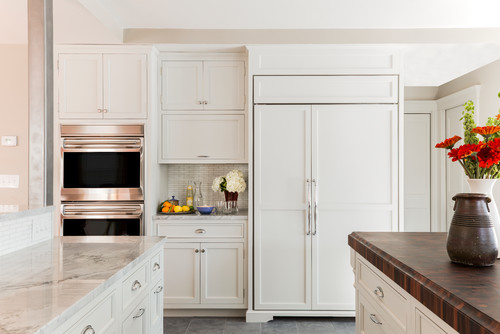
Your investment in high-quality sustainable cabinetry deserves proper care to maintain its beauty and functionality for decades. Fortunately, these materials are not only durable but also easy to maintain. Simple, regular cleaning and prompt attention to any minor issues will keep your kitchen looking pristine.
7.1. Caring for Bamboo Cabinetry
Bamboo is relatively low-maintenance. Clean surfaces with a soft cloth and a mild soap-and-water solution. Avoid abrasive scouring pads that could scratch the finish. Because bamboo is a grass, it is naturally more water-resistant than some woods, but it is still important to wipe up spills promptly to prevent any potential discoloration or warping over time.
7.2. Maintaining the Beauty of Reclaimed Wood
Reclaimed wood cabinets often have a textured, rustic finish. Dust them regularly with a soft, dry cloth. For cleaning, use a pH-neutral wood cleaner. The unique character of reclaimed wood means small scratches or dents can often blend in, but for deeper gouges, a wax filler stick matched to the wood’s colour can provide an effective repair.
7.3. Upkeep for Metal and Composite Surfaces
Stainless steel and aluminum surfaces can be cleaned with a specialized steel cleaner to prevent fingerprints and streaking. Composite materials are non-porous and highly resistant to staining, making them very easy to clean with any non-abrasive household cleaner. Minor scratches on composite surfaces can often be buffed out with a fine-grit sandpaper and food-safe oil.
8. Understanding Your Investment: Warranty and Return Policy

A reputable Canadian cabinet supplier stands behind their products. A clear warranty provides peace of mind and is a testament to the manufacturer’s confidence in their Eco-Friendly Materials in Cabinet Design. At rtadepot.ca, we are committed to your satisfaction, and our warranty reflects that promise.
We encourage you to review the warranty, which covers defects in materials and workmanship. Understanding the terms is an important step. A transparent return policy ensures you have recourse if a product does not meet expectations. Our goal is to make your experience with our Eco-Friendly Materials in Cabinet Design positive and risk-free.
9. Interior Design Ideas for Eco-Friendly Cabinets
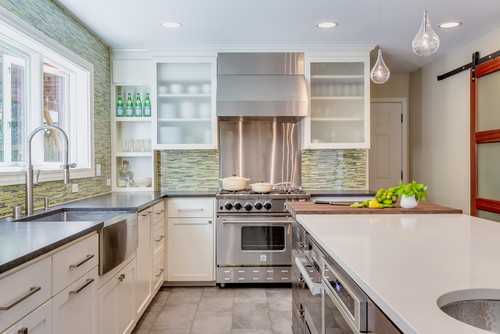
Sustainable materials offer a versatile palette for creating stunning interiors. The unique textures of these materials can anchor a wide range of design aesthetics, from rustic to contemporary. Let your choice of material inspire the vision for your new kitchen, creating a cohesive atmosphere that reflects your personal style.
9.1. Modern Minimalist with Bamboo
The clean lines of bamboo cabinets are perfect for a modern or Scandinavian-inspired design. Pair them with white quartz countertops and simple hardware. This combination creates a bright, uncluttered space. Here, the choice in cabinetry makes a statement of elegant simplicity.
9.2. Rustic Charm with Reclaimed Wood
Embrace the rich history of reclaimed wood to create a warm, modern farmhouse kitchen. The wood’s character pairs beautifully with natural stone countertops. This approach turns your cabinetry into the centerpiece of a cozy home, showcasing the beauty of these wonderful materials.
9.3. Sleek Industrial with Recycled Metal
For a bold, urban aesthetic, consider cabinets with recycled stainless steel doors. This choice creates a professional-grade look. Balance the coolness of the metal with warm wood accents, like a butcher block island. This style highlights the versatility of sustainable design choices.
9.4. Transitional Style with Painted Composites
For a look that blends traditional and modern, consider formaldehyde-free composite cabinets. Their smooth, stable surface is ideal for a painted finish. Choose a classic shaker door style and paint it in a contemporary colour like a deep navy or a soft grey. This allows you to have a classic look while still benefiting from the durability and sustainability of an advanced green material.
Your journey to a sustainable home begins with a conversation. Let rtadepot.ca, a proud Canadian company, be your trusted partner. Our experts are passionate about creating stunning and functional spaces.
Do not delay your dream kitchen. Call us at +1 888 973 5636 for a free design consultation, or visit us at https://www.rtadepot.ca/ to explore our eco-friendly choices. Your new kitchen, built with the finest sustainable materials, is waiting.


